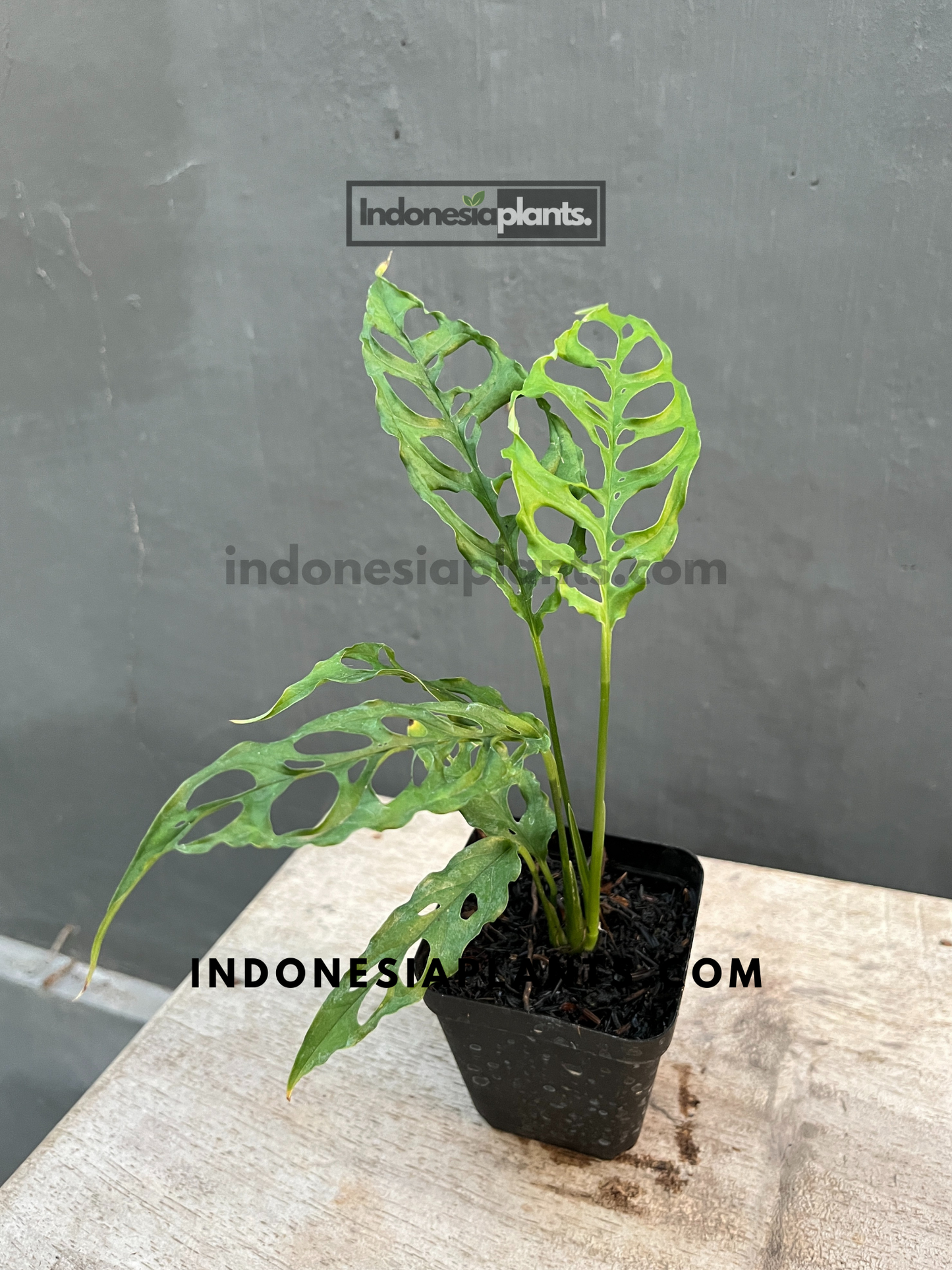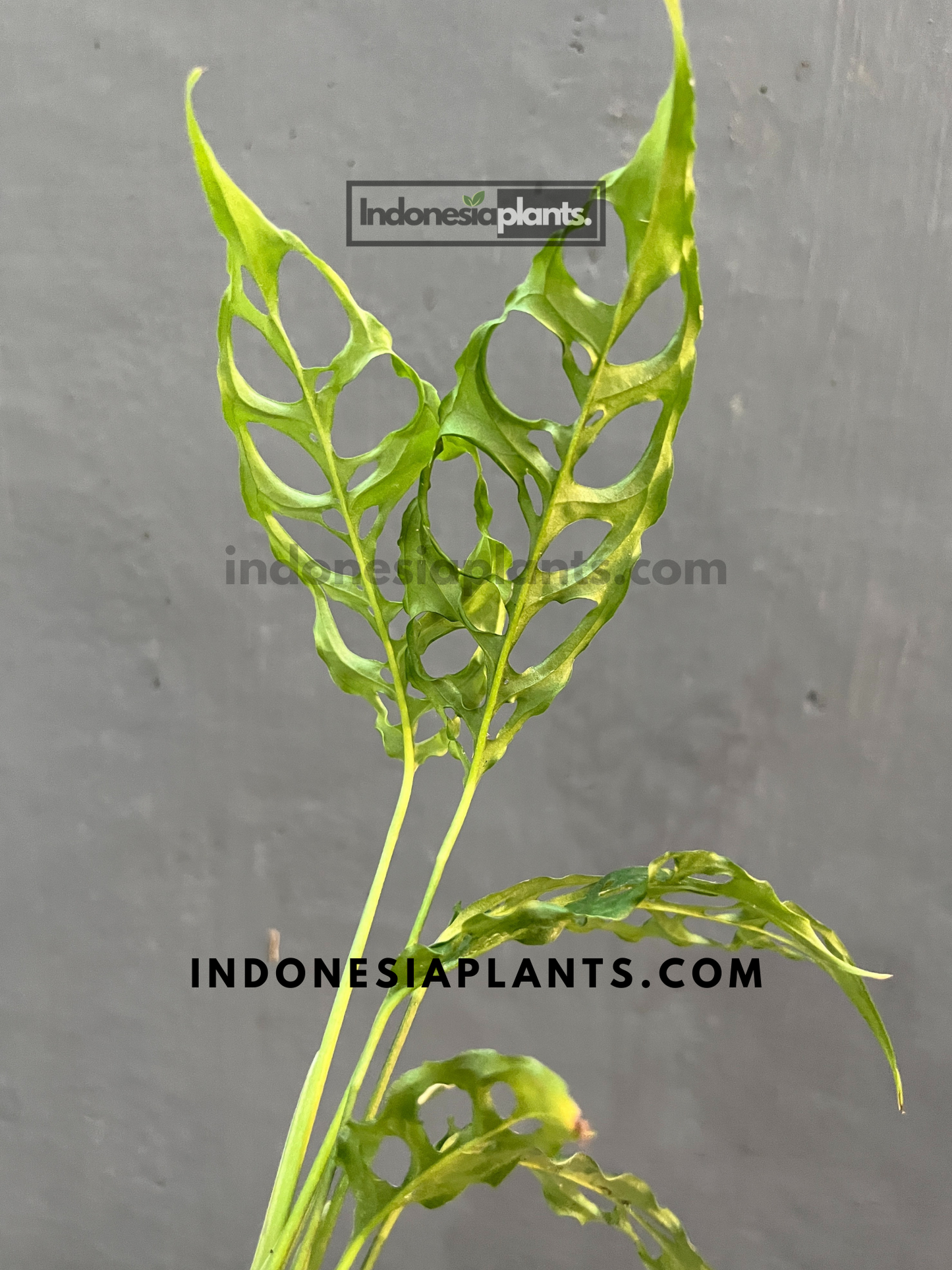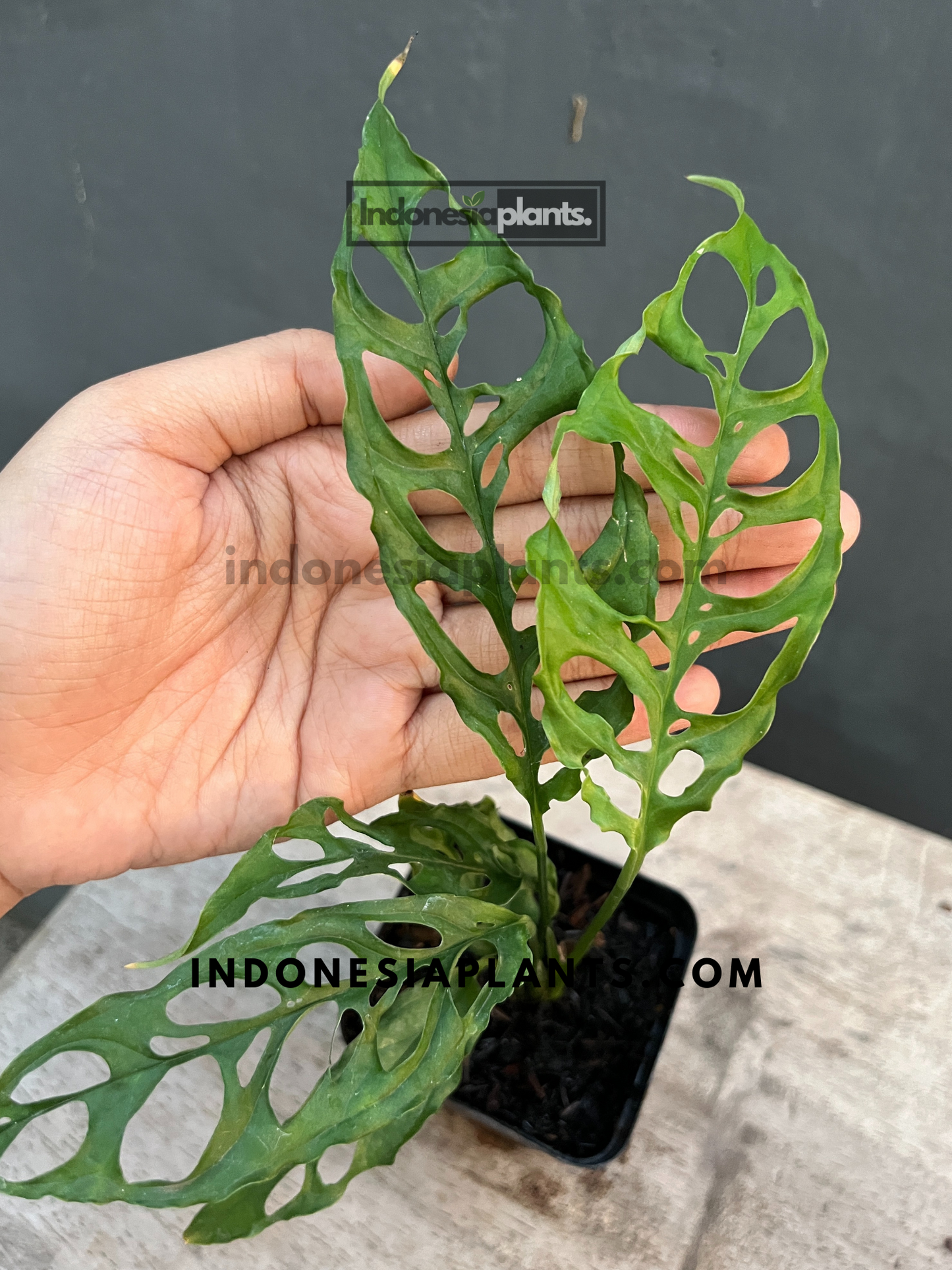indonesiaplants
Monstera Obliqua Peruvian
Monstera Obliqua Peruvian
Couldn't load pickup availability
See photos for reference to the plant features only. They are likely sent to you as featured with the descriptions below.
Minimum of 4 Leaves
Plants shipped will have a minimum of 4 leaves and will be rooted, not cuttings.
Monstera Obliqua Peruvian: The Highland Elegance
The Monstera Obliqua Peruvian hails from the cooler highlands of Peru, offering a more subtle and refined appearance compared to its Amazonian cousins. This variety is known for its delicate, thin leaves with charming, irregular perforations that make it stand out from other Monstera varieties. It’s the perfect choice for those seeking a Monstera with a more understated elegance, blending beautifully into both modern and tropical interior spaces.
Leaf Shape and Design
- Delicate, thin leaves with irregular, natural perforations
- A softer, more organic aesthetic compared to other varieties
- Lacy or soft perforations add elegance and charm
The Look You Want
- A statement vine that feels ethereal rather than bulky—foliage that invites light through, casting lace-like shadows.
- A vertical accent that stays refined in small spaces: slim column, neat nodes, delicate windows.
- A plant that photographs beautifully from multiple angles—editorial close-ups and airy room shots alike.
Why This Plant Delivers
- Ultra-fenestrated blades: The Peruvian form is celebrated for elongated oval windows set in a thin, satin lamina—negative space becomes part of the design.
- Compact vertical habit: On a pole or plank, internodes shorten and the silhouette reads tailored and architectural, perfect for shelves, alcoves, or a studio corner.
- Light-responsive elegance: With steady, diffused brightness, each new leaf refines its window pattern, keeping edges crisp and the overall composition airy.
Setup Checklist (Day 1)
- Light: Place in bright, indirect daylight—an east window or a luminous spot behind sheer curtains. Avoid harsh noon beams that can stress delicate tissue.
- Support: Provide a slim moss pole, coco totem, or flat board. Secure each node with soft ties so leaves align and the vine shinglings into a clean column.
- Substrate: Use an oxygen-forward aroid blend—chunky bark + coco fiber + pumice/perlite—with a modest sphagnum buffer. Aim for breathable structure that holds gentle moisture without clogging air pockets.
- Climate: Typical home comfort works; a slight bump in humidity (~55–70%) keeps margins smooth. Temperature sweet spot: 18–29 °C (65–85 °F).
- Planter: Tall, drainage-forward vessel in neutral finishes (sand, stone, matte porcelain) to spotlight line and shadow.
Weekly Rhythm (Simple, Repeatable)
- Brightness check (2–3×/week): Ensure all-day luminance; rotate the planter a quarter-turn every two weeks for even leaf development.
- Moisture (1–2×/week): Water thoroughly when the top layer just dries back, then let runoff clear completely. Consistency beats frequency—avoid swings from soggy to bone-dry.
- Feeding (bi-weekly in active months): Light nutrition at ¼–½ strength supports leaf sizing without pushing lanky internodes. Pause/halve in low-light seasons.
- Air & comfort: Gentle airflow prevents stagnation around thin lamina; keep away from heat blasts or AC drafts.
Keep It Sharp (Grooming & Styling)
Dust leaves softly so the satin surface and windowing photograph cleanly. Guide wandering runners back to the support for a tight column; tip-prune sparingly to thicken the canopy without losing line. Stage with solid-leaf companions (velvety Anthurium or broad Philodendron) for a curated contrast—dense versus ethereal. Side-lighting amplifies shadow play; limewash or pale timber backdrops make the lacework glow. As with many aroids, keep foliage out of nibbling reach.
Kindly reach out to us at indonesiaplants@gmail.com if you have difficulties in your purchase or have any questions.







